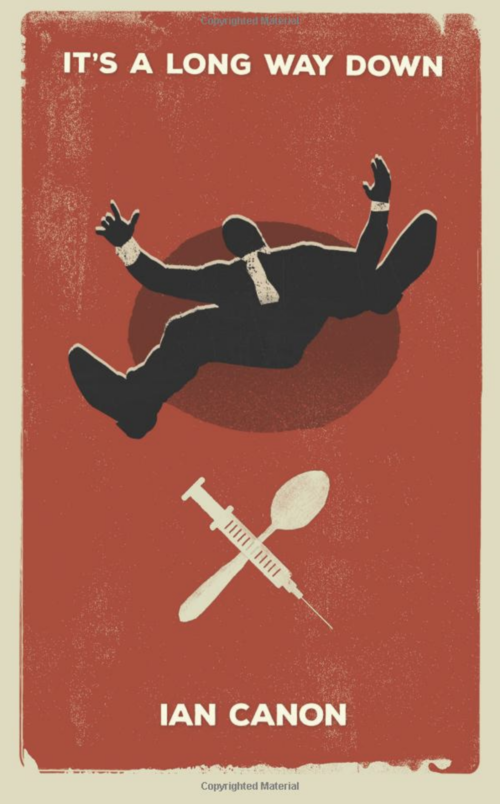A 7-Step Process To Editing Your First Novel Into Print | Everything You Need To Know
Recently, I've had a few people ask me about my editing process. I think a lot of writer's processes are probably different, but after recently finishing my second novel, I think I've solidified mine.
Hope this helps some struggling writers who are in the "what now" phase.
In Anne Lamott's "bird by bird,” which I think is full of great creative advice—she tells the aspiring writer to simply take each step bird by bird, without looking back and evaluating what you’ve put down. Simply write each sentence, each word, one at a time, and keep going.
Why? Because the first draft is all about getting it down. Quality will come later.
However, at some point (I hope), you’ll eventually come to the end of the first draft and be asking yourself “now what?”
So I wanted to give you a 7 step overview of my editing process.
My novel editing process has about 7 (major) steps in it.
Write the novel
Read the novel, making edits and comments where you can about the STORY. What parts of my story am I missing, what do I need to remove, and what do I need to add.
Re-write the novel from scratch, referencing the notes and the first draft, adding and deleting parts as necessary
Re-read the novel, making notes where I think I went wrong, then re-write those parts, specifically.
One last, full-scale, rewrite from scratch, focusing on the language I’m using. I want each sentence to be the best possible sentence it can be.
Print off your novel, read it out loud, and make edits directly on the page. Go back and fix anything you made notes on.
Final, checklist based edit.
The first step, before you write the novel, is understanding what kind of writer you are. Because before you get started, you want to know how BEST to get started. I touched upon this briefly in my blog, “How I Actually Sat Down And Finished My First Novel.”
Do you just begin writing, holding onto a single vision or idea that sparked your creativity, letting the gods touch upon you and give their gift of creativity?
Or do you meticulously plan everything out, down to the colour of the cat’s wig.
For me, I write a very brief summary (3-4 sentences) of each chapter and allow myself the room to break from that summary. That way, I know where I was going and what kind of story I have, allowing me the creative freedom and planned security to actually write the story.
So that’s my pre-step. Write a chapter by chapter summary. Evaluate that chapter by chapter summary on the basis of character motivations, missing chapters, extra chapters, story flow, how it ends, how it begins, and so on.
But now the fun part begins: writing.
Step 1: Write The Novel That No One Should Ever, And I Mean Ever, Read
Once my outlining is done, I put on my big boy pants and begin writing. This process is perhaps the most arduous and difficult to get through, as the entire time, your mind is yelling “THIS IS AWFUL. YOU’RE AWFUL. STOP BEING AWFUL. BECOME A CAR SALESMEN!”
It’s not pleasant, but you have to dig your heels in and keep going, because every draft after this one will be closer to the diamond you’re now digging out of a turd.
One thing that help me get through the process was making a calendar in which I wrote down a word count every day and a big fat zero when I didn’t write. I got addicted to seeing those numbers on the calendar.
The second thing was writing at the same time every day. I wake up an hour early before work and get that hour in, then get 2 hours in on weekends. I used to shoot for 2 hours on weekdays and 4-5 on weekends, but I found myself failing all the time, then beating myself up for it. So what’s the point? Create reasonable goals and expectations.
So that’s it. Sit down and write your novel. It’s not easy. In fact, it’s going to suck and that’s okay.
As the ol’ saying goes, “sucking is the first step to being really good at something.”
But as you write, one thing is important: DON’T RE-WRITE IT YET. DON’T READ IT OVER. DON’T EVALUATE THE QUALITY.
Once you get into that territory, that’s where a good novel goes to die. Because this one will suck and that good one that’s in there somewhere will never see the light of day.
STEP 2: Re-read your novel and look for what’s missing.
Once you’re finished and you’ve had some time to experience the characters in your story, where they go and what they do, you should go back and read your novel.
Now, remember to be gentle with yourself. It’s not the time to evaluate it on the words that were written, but simply the story that is there.
Read through it and comment on all the places the story went right, wrong, or didn’t need to be there. Fix anything that you thought didn’t make sense or didn’t belong. Understand the story that you (almost) created and start to see the story that you want to create.
Again, don’t worry about grammar or sentence structure. You’re simply trying to create the best story ever written NOT the most well-written story. Fixing the words you used will come at a later date.
STEP 3: Rewrite the novel from scratch, changing the story where it needs to be changed
Open up that blank page and begin anew, using your first draft and your notes as a reference. You’ll even notice that as you write, the story will become more real, more full, and the words you use will become more poetic and descriptive.
That’s because, in your mind, the story is starting to solidify into something real, something that actually happened. You’ll notice scenes are clearer, your protagonist is a little more solid, and you start to understand why your character says and does things.
But it still won’t be perfect. It’s almost there, but you’ll have added some scenes, removed some scenes, and changed the story a little. Some parts may now be a first draft. Enter step 4.
STEP 4: Read through your novel, make comments, and fix those places you’ve made comments.
In this step, you want to again read through your novel, making comments where you think you went wrong, where the story still isn’t quite right, and where the new parts (that you added in the last draft) still feel too thin or new.
Then, with those notes, fix and / or rewrite those parts until you think the story is perfect.
But don’t make the mistake of thinking I mean well-written. I simply mean that what you have down on paper is the exact story that you want. That’s it.
Because once you have the story that you want, you’re nearly there, and before you move onto the next step, take a second to pat yourself on the back. You made a story that you’re proud of.
Now to make the words worthy of the story you created.
STEP 5: Start from scratch again!
Now you can stop worrying about the story in front of you. All you have to do is worry about the words that make up the story.
(You’ll still find yourself wanting to change the story here or there, as that’s just the nature of a writer. Go ahead, but don’t worry about it too much.)
In this step, the point is to meticulously pull apart each sentence and try to make it the best sentence possible. That doesn’t mean you make it the most poetic, or long, or have the biggest words you can think of. It just means each sentence is the best sentence that could possibly convey the information you want to convey. Sometimes that’s a very basic, short sentence. Sometimes that is a long, poetic sentence that incorporates a word that’ll have your reader running for their dictionary.
And that’s (mostly) a subjective art, with some hard and fast rules—which I won’t share here. If you’re interested in reading more about sentence construction, there are a lot of helpful books that can get you started!
But if you like to learn through emulation, I’d suggest you read more and deconstruct what makes a great sentence by reading great sentences in your given genre.
One book that I personally enjoy is X-Ray Reading by Roy Peter Clark.
STEP 6: Print it off and read it out loud.
Okay, you’ve finally (with emphasis) finished your last rewrite. In the distance, you can see the finish line. You’re almost there. Your story and the words in your story are 99% perfect. What’s left?
It’s my favourite part. Print off your book and read it out loud with a pen in hand.
In this process, you’re going to be looking for a few things
Grammar
Typos
Inconsistencies
Voice of Dialogue
Things being too “on-the-nose”
Places you can completely cut (ask yourself: “What would happen if I cut this entire section)?
Words you use too often
Whatever else sticks out and bothers you
Now go and fix all those mistakes you’ve just discovered.
Now you’re done, right? Not so fast. There’s one last edit of common errors which I’ll share with you.
STEP 7 - The Control / Command + F Checklist
I call it the “CTRL+F Checklist," which I put together myself. That's because you're doing a mass-search for problem words in your novel (everyone will have their own, slightly different, list).
You simply look for these words and cut them (use your judgement, though, because there is a place and a time for every word:
The CTRL / COMMAND + F CHECKLIST EVERY WRITER SHOULD USE:
Very
Really
That
‘Ly’ words
Suddenly
Started
Began
Just
Down / Up (She sat [down] on the couch / She Stood [up])
Character Names
Cut the words you use too often (In my last novel, I used "precipice" like 7 times for some reason).
Now your book is (basically) ready for beta readers, copy editors, and the final, final leg of the journey. Hope this helps.







